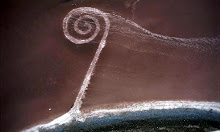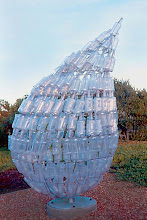In 1986, a monument called the "Monument Against Fascism, War and Violence -- and for Peace and Human Rights" was constructed in Hamburg, Germany. Two artists, Jochen Gerz and Esther Shalev-Gerz,designed a structure which has come to be called a countermonument. (Countermonuments tend to criticize traditional monuments by stating that a monument can only do so much and that it is the people who must take a stand.) Once their design was approved, the city wanted to place the monument in a park, however, Gerz and Shalev-Gerz chose instead to place their piece in a busy shopping center. Their design was by no means aesthetically pleasing but their purpose in designing this monument was to raise awareness. Due to its placement, the monument was noticed by many, catching many an eye. In addition to its ugly design, the artists intended for it to contrast its surroundings and hung pens from each corner of the 12-meter tall pillar, inviting people to sign their names on it. An inscription at its base read "We invite the citizens of Hamburg and visitors to the town, to add their names here to ours. In doing so, we commit ourselves to remain vigilant. As more and more names cover this 12 meter tall lead column, it will gradually be lowered into the ground. One day it will have disappeared completely, and the site of the Hamburg monument against fascism will be empty. In the end, it is only we ourselves who can rise up against injustice." The monument was eventually lowered entirely into the ground in 1993, sealed into the ground by a piece of glass through which people can still see the top of the column. Though the monument itself is not as easily visible as it was when first erected, its location in the middle of the busy shopping center reminds passers-by of its significance.
The original monument:

What can be seen today of the monument:

Questions to consider:
-Can all monuments be considered site-specific?
-If the artist intends for the piece to eventually disappear, is that considered "destroying the work"? (Remember Richard Serra's quote: "To move the work is to destroy the work".)










No comments:
Post a Comment